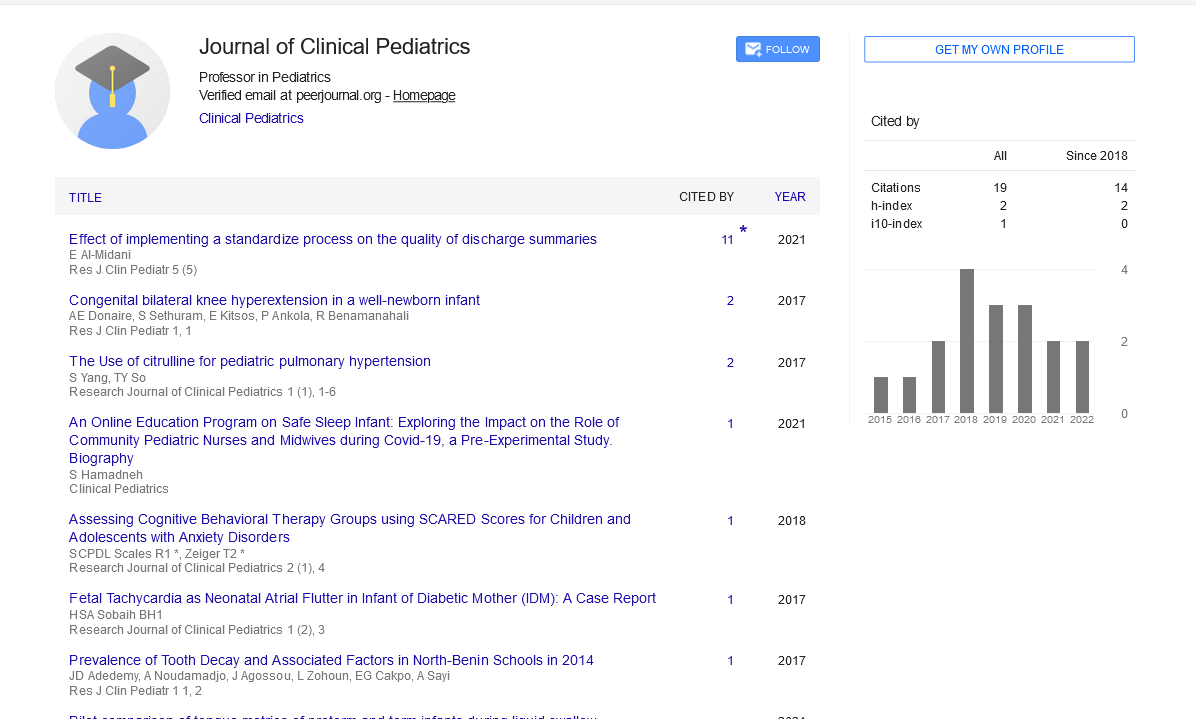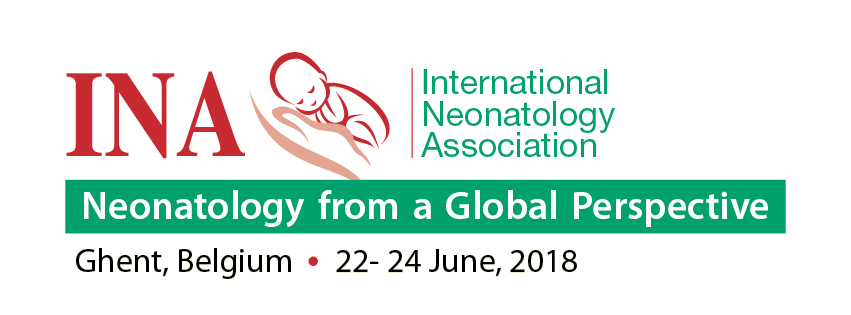Commentary, Res J Clin Pediatr Vol: 7 Issue: 1
Birth Asphyxia: Understanding Causes, Risk Factors, and Treatment
Hakman Paul*
1Department of Pediatrics, University of Belgrade, Studentski trg 1, Beograd, Serbia
*Corresponding Author: Cheng Xiang
Department of Pediatrics, University of
Belgrade, Studentski trg 1, Beograd, Serbia
E-mail: haakman.paul@uppsala.edu.se
Received date: 16 February, 2023, Manuscript No. RJCP-23-96130;
Editor assigned date: 20 February, 2023, PreQC No. RJCP-23-96130 (PQ);
Reviewed date: 10 March, 2023, QC No. RJCP-23-96130;
Revised date: 17 April, 2022, Manuscript No. RJCP-23-96130 (R);
Published date: 24 April, 2023, DOI: 10.4172/Rjcp.1000132
Citation: Paul H (2023) Birth Asphyxia: Understanding Causes, Risk Factors, and Treatment. Res J Clin Pediatr 7:1.
Description
Birth asphyxia is a serious medical condition that occurs when a newborn's brain and other organs are deprived of oxygen during delivery. It can lead to a range of long-term complications, including cerebral palsy, developmental delays, and cognitive impairments. This manuscript provides a comprehensive overview of birth asphyxia, including its causes, risk factors, and treatment options. We also discuss the importance of early detection and intervention, and the potential for improving outcomes through research and innovation.
Birth asphyxia is a critical health issue affecting millions of newborns worldwide. It occurs when a baby's brain and other organs are deprived of oxygen during the delivery process, which can result in a range of complications and long-term disabilities. Despite advances in perinatal care, birth asphyxia remains a leading cause of infant mortality and morbidity in many countries. In this manuscript, we provide an overview of the causes, risk factors, and treatment options for birth asphyxia, and highlight the importance of early detection and intervention.
Causes
Birth asphyxia can occur due to a variety of factors, including maternal or fetal health conditions, complications during labor and delivery, and environmental factors. Maternal health conditions such as preeclampsia, gestational diabetes, and infections can increase the risk of birth asphyxia. Fetal health conditions such as anemia, congenital heart defects, and infections can also contribute to the condition. Complications during labor and delivery, such as a prolonged second stage of labor, placental abruption, and umbilical cord prolapse, can also increase the risk of birth asphyxia. Finally, environmental factors such as hypoxia, hypercarbia, and acidosis can contribute to the condition.
Risk Factors
Several factors can increase the risk of birth asphyxia. These include maternal age, maternal health conditions, fetal health conditions, multiple pregnancies, and certain environmental factors. Older maternal age, maternal obesity, and maternal smoking can increase the risk of birth asphyxia. Fetal health conditions such as intrauterine growth restriction, preterm birth, and congenital anomalies can also increase the risk of the condition. Multiple pregnancies, such as twins or triplets, can also increase the risk of birth asphyxia. Finally, environmental factors such as placental insufficiency, uterine rupture, and maternal hemorrhage can increase the risk of the condition.
Treatment
Early detection and prompt treatment are crucial for improving outcomes for newborns with birth asphyxia. Treatment options depend on the severity of the condition and may include resuscitation, oxygen therapy, mechanical ventilation, and medications to support blood pressure and cardiac function. In severe cases, the newborn may require therapeutic hypothermia, a treatment that involves lowering the body temperature to reduce the risk of brain damage. Ongoing monitoring and supportive care are also essential for infants with birth asphyxia, as they may be at risk for complications such as seizures, cerebral palsy, and developmental delays.
Conclusion
Advances in research and innovation have the potential to improve outcomes for newborns with birth asphyxia. Ongoing studies are exploring new approaches to diagnosis and treatment, including the use of biomarkers to identify infants at risk of birth asphyxia, and new therapies to support brain and organ function during the critical period after delivery. Additionally, innovative technologies such as artificial intelligence and machine learning may help healthcare providers detect and treat birth asphyxia more effectively. Finally, communitybased interventions, such as education and training for families and healthcare providers, may help prevent the occurrence of birth asphyxia and improve outcomes for affected infants.
 Spanish
Spanish  Chinese
Chinese  Russian
Russian  German
German  French
French  Japanese
Japanese  Portuguese
Portuguese  Hindi
Hindi 
